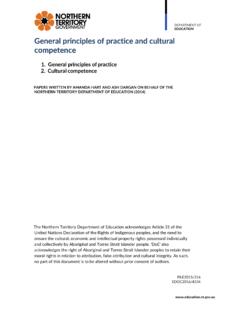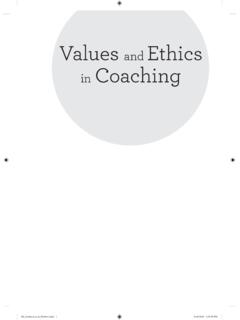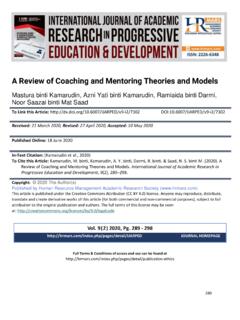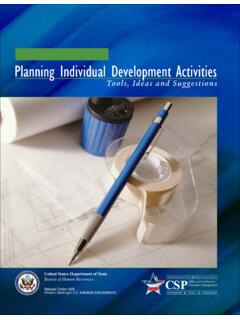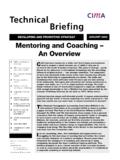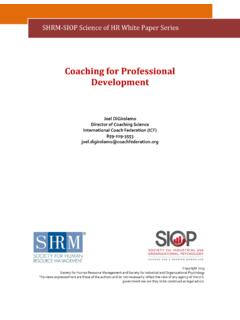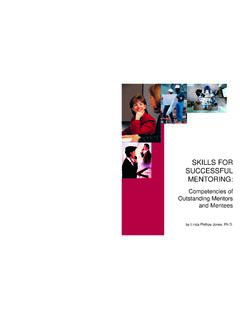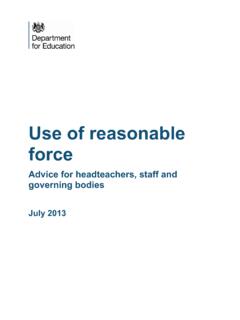Transcription of A Teacher's Guide to Effective Mentoring
1 A TEACHER S Guide TOEffective MentoringThe Northern Territory Department of Education A teacher s Guide to Effective Mentoring by Northern Territory Department of Education is licensed under a Creative Commons Attribution-Non Commercial International : State of Victoria (Department of Education and Training) A Reflective Guide to Mentoring and being a Teacher Mentor by EdPartnerships International, commissioned by the Victorian Department of Education and Early Childhood Development (2014) adapted for use under the Creative Commons Attribution International Licence. To view a copy of this licence, visit: Contents 1. Introduction .. 4 How is this Guide organised? .. 4 What role do mentors play in meeting Teacher Registration Board requirements? .. 52. What is the purpose of Mentoring ?
2 6 What do we mean by Mentoring ? .. 6 Why do we need mentors? .. 8 Mutual benefits of Mentoring .. 93. How well does our school context support Effective Mentoring ? .. 10 Considering our school s learning architecture .. 10 Enabling structures to support Mentoring .. 11 How and why are enabling structures important? .. 12 Considering operational constraints .. 13 What enabling structures are present at my school? .. 154. What kind of mentor will I be? .. 16 Considering my professional stance .. 16 How do I approach others? .. 16 How do I position less experienced colleagues? .. 18 What are my underlying dispositions? .. 19 How might this affect the way I mentor? .. 215. What do I need to know and do as a mentor? .. 22 Who am I Mentoring ? What kind of support do they need?.
3 22 Strategies and options for supporting new teachers .. 23 The 4Cs: Clarifying, Consulting, Collaborating and Coaching .. 24 Classroom observation as a means of supporting professional learning .. 28 Facilitating professional conversations .. 32 Giving and receiving feedback .. 37 Evidence-informed conversations .. 37 Difficult or challenging conversations .. 41 The Evidence-based Professional Learning Cycle .. 42 Learning Design using the Eight Learning Management Questions .. 466. What does the international research say about Mentoring ? .. 48 Common themes in the research .. 49 What practices get in the way of Effective Mentoring ? .. 53 Want to know more? .. 547. What might all this mean for me? .. 558. Appendix .. 56 Learning design using the Eight Learning Management Questions.
4 56A Teacher s Guide to Effective Mentoring4A series of reflective questions, prompts and possibilities are offered for you to consider throughout this Guide . These are provided to promote a reflective approach to the text, which recognises an essential need for you to decide how best to support your new colleague. The pin symbol signifies activities and reflection points throughout the IntroductionThis Guide is designed to support the further development of experienced teachers in their important role of Mentoring less experienced is a Guide rather than an instruction manual because it assumes that you, the reader, are an accomplished teacher with a broad range of tried and tested teaching strategies combined with a well-developed understanding of the subjects you teach. It assumes that you already work well with colleagues and now want to further develop or deepen your skills and capacity to mentor a new teacher or less experienced means the practices referred to in this Guide , drawn from research, are offered for reflection and as options to be considered and adapted rather than simply implemented.
5 The ideas represent opportunities to think about and experiment with your practice and to expand your professional repertoire. This should lead to an approach to Mentoring that is appropriate to you, your circumstances and the colleagues you are this Guide is designed primarily for people new to Mentoring , many of the ideas and practices should also be relevant for more experienced is this Guide organised?A Teacher s Guide to Effective Mentoring is divided into seven Introduction 2. What is the purpose of Mentoring ?3. How well does our school context support Effective Mentoring ?4. What kind of mentor will I be?5. What do I need to know and do as a mentor?6. What does the international research say about Effective Mentoring ?7. What might this mean for me? A Teacher s Guide to Effective Mentoring5 The mentor supports a new teacher through Teacher Registration Board processes by: in conjunction with their principal or line manager, discussing and helping the new teacher to understand how the process works exploring what the AITSL standards mean and look like in practice evolving how the new teacher might go about developing practices that enable them to achieve the standards helping them identify and capture evidence that demonstrates achievement of the standards and can be used to support their application for full of the mentor s roles is to Guide and support their colleague through the registration process, rather than evaluate, judge or assess their performance against the standards.
6 Mentors help new teachers to recognise how they re progressing in relation to the standards and help them to know when they re ready to submit their application for registration as a fully registered teacher. What role do mentors play in meeting Teacher Registration Board requirements?The Australian Institute for Teaching and School Leadership (AITSL) is the national body that defines and sets out the professional standards that teachers must achieve to qualify for full registration. These standards reflect the qualities, practices and behaviours necessary to be an Effective teacher in contemporary Australian , on their website, say:The Australian Professional Standards for Teachers is a public statement of what constitutes teacher quality. The Standards define the work of teachers and make explicit the elements of high-quality, Effective teaching in 21st-century schools, which result in improved educational outcomes for students.
7 The Standards do this by providing a framework that makes clear the knowledge, practice and professional engagement required across teachers careers. They present a common understanding and language for discourse between teachers, teacher educators, teacher organisations, professional associations and the standards also inform the development of professional learning goals, provide a framework by which teachers can judge the success of their learning and assist self-reflection and self-assessment. Teachers can use the Standards to recognise their current and developing capabilities, professional aspirations and see the standards as contributing to the professionalism of teaching, raising the status of teaching and what it means to be a play an important supporting role for new teachers as they navigate their way through the requirements of the Teacher Registration Board of the Northern Territory to move from provisional to full registration.
8 These processes are a key aspect of inducting new teachers into the profession and are aligned to the AISTL professional Teacher s Guide to Effective Mentoring6A Teacher s Guide to Effective Mentoring62. What is the purpose of Mentoring ?What do we mean by Mentoring ?The term mentor is used in this Guide to describe a knowledgeable, experienced, and highly proficient teacher who works with and alongside a new teacher or less experienced colleague quite closely at first but this gradually diminishes as the new teacher becomes more capable and confident. A mentor is not an instructor and the mentee is not a student; they are both know a great deal about teaching and learning, students, parents and the school, which often leads to a kind of practical wisdom that can t be printed in a book this knowledge and know-how is invaluable to new come in all kinds of shapes, sizes and packages with different skills and ways of working.
9 What makes you, as a mentor, different from your teacher colleagues is that you have volunteered to help someone just starting out as a teacher, new to a particular teaching context or wanting to develop their teaching practice. A lot of time, thought, energy and effort is needed to become a great mentor. This document provides a range of activities throughout so that you can reflect on and record what you believe Mentoring is and what Effective mentors Teacher s Guide to Effective Mentoring7An ideas Creating an ideas tree will allow you to clarify your existing beliefs and understanding of what Mentoring is and what you perceive mentors a piece of A3 paper jot down these questions: What is Mentoring ? What do mentors do?Write down whatever comes to mind as you think about and unpack these questions.
10 When you can t think of anything else to add, alongside each entry respond to the following question: If this is what mentors do, what might that mean for being an Effective mentor?In the example ideas tree that follows, intended only as an illustration, you can see how responses to the questions above can be unpacked and deepened. Example ideas is Mentoring ?Think about your experiences of Mentoring and/or being mentored to frame up your responses. For example Mentoring could be: When someone offers just the right kind of support, well-suited to the emerging needs of the person they are Mentoring because they deeply understand that person and have an extensive repertoire of possible practices/responses which they can draw on, tweak and adapt according to circumstances and do mentors do?


